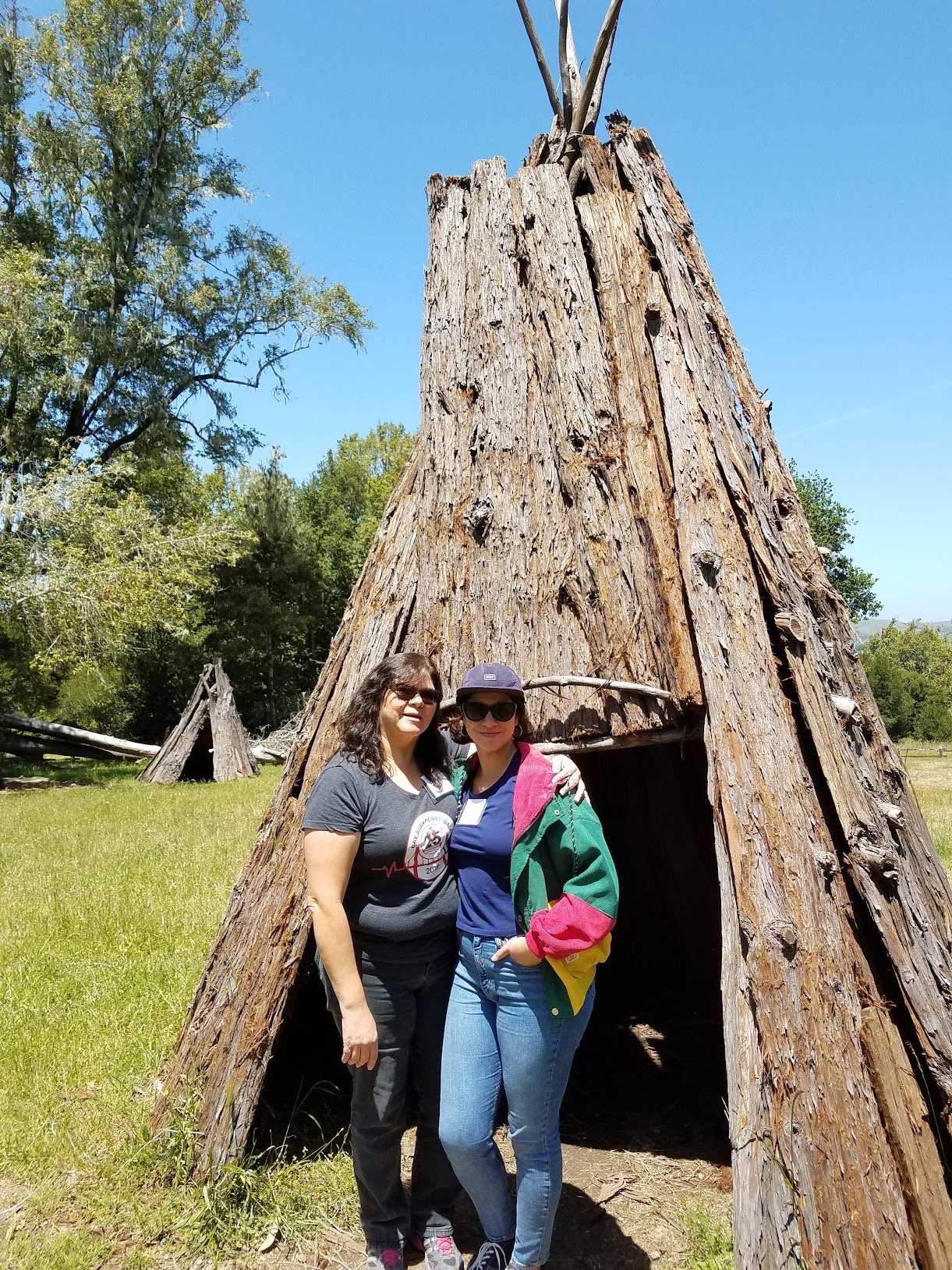The Redbud Resource Group is a California native and Indigenous women-run public health non-profit. Founded in 2020, their mission is to eradicate public health disparities that exist in native American communities.
“We don’t have an accurate understanding of what it means to be a native person, politically, economically or culturally. We’re pervasively missing from everywhere. We’re not in Public Health data. We’re not in politics. We’re not in art unless it’s appropriation. We’re definitely not represented in education in an accurate way and so we try to tackle those erasers in school settings by providing curriculum,” said Taylor Pennewell, one of the founders of Redbud Resource Group.
The Redbud Resource Group offers a platform for Tribes to communicate their personal stories to educate non-native audiences on the importance of listening, learning, and adapting to the requests of Indigenous sovereign nations. To complete its mission, the group provides curriculum, cultural competency materials, education and teaching guides, organizational and program assessments, cultural consulting as well as academic research.
The group was started by two Tyme Maidu women who are both now tribal members at Berry Creek, Taylor Pennewell and Madison Esposito. Also on staff are Rose Hammock, of Round Valley Indian Tribes as well as Tiffani Lopez and Trelasa (pronounced truh-lay-suh) Baratta, both of which are Indigenous SSU students. Redbud is a 501c(3) non-profit organization that contracts its services out to clientele.
SSU student Tiffany Lopez is the media director at Redbud Resource Group. She is in charge of filming the LandBack documentary series that will assist in spreading the group’s message and increasing the rate at which land is being returned.
Trelasa Baratta is the Curriculum Designer for Redbud Resource Group currently working towards getting her Masters of Arts in Education from SSU. She was pointed in the direction of the Redbud Resource Group by Erica Tom, the Director of the Native American Studies department at SSU. “Working for Redbud Resource groups feels like so much more than a job. I feel like I have a voice, like I’m uplifted by strong, brilliant women who understand my experiences growing up as a Native in a colonial world,” Baratta said.
Baratta’s daily responsibilities involve collecting accurate, research-based information to create educational materials from an Indigenous perspective. “I’m currently working on a 4th grade unit that emphasizes place as a key source of knowledge, and highlights Native power and resilience in real time and space, which I believe challenges Native culture as a thing of the past,” Baratta said.
The Redbud Resource Group is working towards doing public health research to measure the impacts of their programs on native and non-native society. The organization is currently partnered with the University of Minnesota-Duluth Medical School to start collecting data to measure the psychological impacts of Going Beyond Land Acknowledgement. The goal of this research is to measure how people’s perceptions of native people evolve over the course of the program.
Pennewell was shocked to discover the primary public school literature for teaching Native Studies was Pocahontas. “It was very clear that the education system wasn’t designed with native cultural norms or needs in mind. Even when I, a teacher, would talk to my principles and my staff about the need to update the curriculum or provide services for native people. They usually didn’t think that native people were in school. Like they didn’t understand that there were native students in their communities, which is very normal,” Pennewell said.
Being native is more than just an identity. Pennewell said, “It’s not just an ancestral Identity or an ethnic identity, it’s a political identity. You are politically tied to your land, your family and your nation. I find when we start talking about it in political terms, people start to take us a little bit more seriously.”
To start becoming informed about these issues, one can start by educating themselves through blogs, newsletters, and social media. The Redbud Resource Group also has a wide variety of educational resources available on its website: https://www.redbudresourcegroup.org/what-we-do They can also be found on Facebook and Instagram @redbudresourcegroup.
Baratta also had some insightful advice for her non-native classmates. “If any students out there are passionate about becoming true allies to their local Native American communities, I would say keep it simple: listen. There is a lot of valuable information that Western knowledge has to offer. If educational institutions coupled that with Indigenous ways of knowing, perhaps our world would find true balance and harmony, as my ancestors knew for thousands and thousands of years,” Baratta said. “If you set your fears aside, allow any ‘white guilt’ to settle, your heart will open and you will know what appropriate actions to take to help Native American communities.”
COURTESY// Trelasa Baratta
Trelasa Baratta and her mom at Kule Loklo in front of a kotcha.





![[Both photos courtesy of sonoma.edu]
Ming-Ting Mike Lee stepped in as the new SSU president following Sakakis resignation in July 2022](https://sonomastatestar.com/wp-content/uploads/2024/04/CC4520AB-22A7-41B2-9F6F-2A2D5F76A28C-1200x1200.jpeg)


























